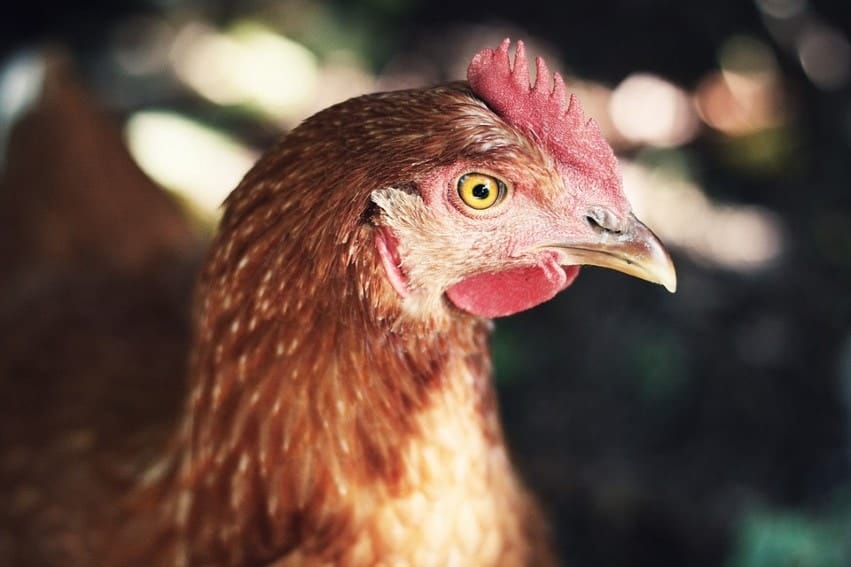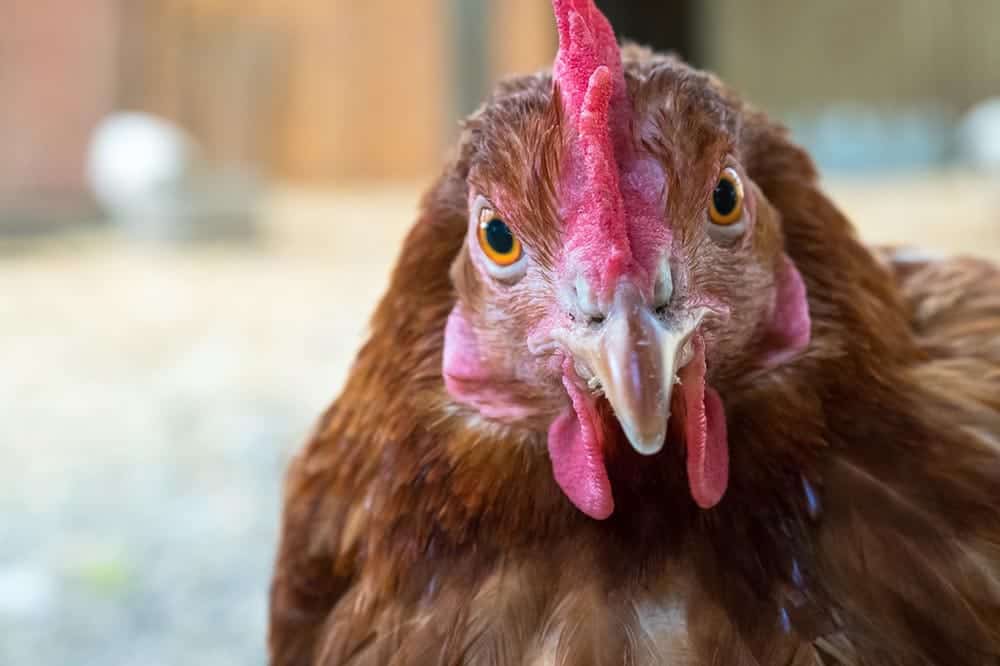Approved by Dr. Luqman Javed
Chickens are often quickly dismissed as being not very intelligent, but given a chance, the humble chicken’s abilities will surprise you! Anyone who owns chickens will already know they have spectacular eyesight, able to catch the brief glimpse of the tiniest insect from meters away. But it is a common misconception that chickens are colorblind.
Chickens are not colorblind. Chickens have excellent color vision and can pick up on many spectrums of color, including violet and ultraviolet spectrums. This color vision helps them forage safely but is also thought to be important in mate selection and breeding.
There’s more than meets the eye when it comes to chicken vision. Not only can they see color well, but they can also see a lot more than we give them credit for. Keep reading to learn just how unique the chicken’s eye is.

Chickens Can See More Than Us
We, humans, are often human-centric when we compare the senses of animals. We often refer to animals who may view colors differently as colorblind, when in fact, they have evolved to view the world differently.
As far as chickens go, we can by no means call them colorblind. Chickens’ eyes contain all the cones (color sensing cells) that our human eyes do. In fact, they top us by having six types of cone cells, where we have a measly three. These extra cones allow chickens to see colors and tones we could not even imagine existing.
Some of these cones can detect violet and ultraviolet wavelengths, which are not visible to the human eye. Think of some human tools like black lights designed to expose differences in tone on the ultraviolet spectrum like what a chicken can visibly see.
In addition to this stellar color vision, chickens have extraordinary focusing abilities when viewing things both close and long distances. Chicken’s eyes possess two fovea—a pit in the eye that assists in focusing, meanwhile we only have one. One chicken fovea is for long-distance, while the other is for nearby.

Evolution of Chicken Colorvision
Chickens are descendants of dinosaurs. Makes sense, right? Take your feathers, and you’ve got yourself a casting crew for the next Jurassic Park movie.
During the age when dinosaurs reigned the earth, the very first mammal species were small foragers that relied on stealth to avoid predation and were likely nocturnal. However, chicken ancestors roamed during the day, so it is theorized that modern-day birds have a superior vision to most mammals due to millions of extra years of vision evolution.
The double fovea in chickens’ eyes is an evolutionary trait for survival. The ability to focus on two things at once helps them watch out for predators and search for food nearby. This has dramatically increased their survival through their evolution.
The Use of Colorvision
These days our prehistoric feathered friends do not need to worry about such survival pressures of the wild. They get a comfortable life in a barn with ample space to roam around. So how does a chicken’s incredible color vision serve them now?
- Mate selection – the spectrums of colors that we can’t visibly see are visible between chickens as distinctive marks on their face and feathers. Male chickens will display vibrant and fluorescent colors on their combs and feathers to display their physical fitness to potential mates.
- Identification – a chicken’s great color vision also allows them to see coloration in feathers much deeper than their surface colors. This vision helps them identify the subtle differences between individuals and recognize their chicks and members of their flock vs. stranger chickens.
- Foraging – chicken’s deep and varied color vision helps to accurately and efficiently find safe foods to eat. They can spot a tiny stone in a sea of grass!
- Related Read: Can Chickens See in the Dark? How Well?

Final Thoughts
Chickens continue to surprise us. Their amazing biology and behaviors extend beyond their general view as being bird-brained and not very bright. A simple chicken has undergone millions of years of evolution to become the prime specimen with incredible vision.
Don’t underestimate the complicated and amazing vision of a chicken, they see things you could not even begin to imagine!
- You may also be interested in: Where Do Chickens Live in the Wild? (Countries & Environments)
Featured Image Credit: Pixabay
